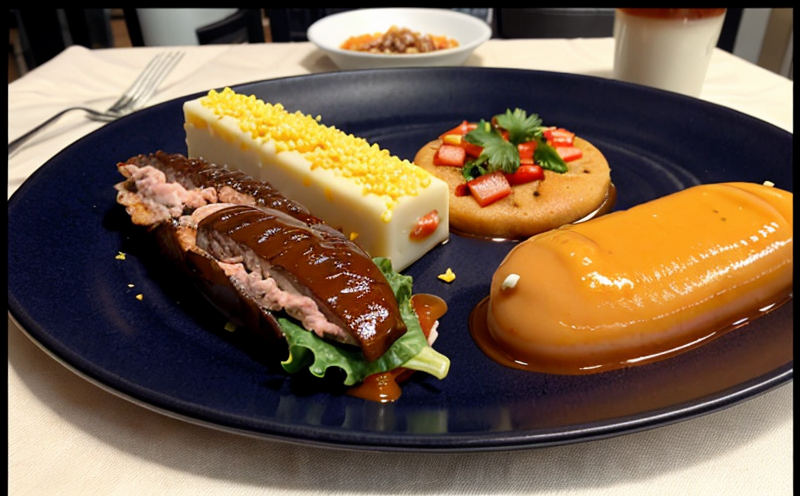EU 10/2011 Testing of Coatings for Food Contact
The EU Regulation (EC) No 10/2011 sets stringent requirements for materials and articles intended to come into contact with foodstuffs. This regulation is designed to ensure that such materials do not transfer harmful substances to the food during storage, processing, or consumption.
Coatings are a key component in many packaging products used in direct contact with food. They serve multiple purposes, including improving barrier properties, enhancing aesthetics, and providing protection against moisture, oxygen, and other contaminants. However, these coatings must comply with the strictest safety standards to prevent any potential transfer of non-edible substances into the food.
The testing process for coatings intended for food contact under EU 10/2011 involves several critical steps. It begins with a comprehensive review of the composition and formulation of the coating, followed by rigorous laboratory analysis using various analytical techniques to ensure that only permitted substances are present in safe concentrations.
A major focus is on the migration testing, which assesses the potential transfer of chemical components from the packaging into the food. This includes not only direct contact but also indirect exposure scenarios. The regulation specifies a list of substances whose migrations must be controlled and limited to safe levels as defined by Annex II of EU 10/2011.
The testing process typically involves exposing the coated materials to various food simulants, simulating real-world conditions that might lead to migration. These simulants include water, oil, and acidic or alkaline solutions, among others. After exposure, samples are analyzed for the presence of regulated substances using techniques such as gas chromatography-mass spectrometry (GC-MS) and inductively coupled plasma mass spectrometry (ICP-MS).
The results of these tests must meet or exceed the specified limits set by EU 10/2011. Compliance with this regulation is not only a legal requirement but also essential for maintaining consumer confidence and ensuring product safety. Non-compliance can lead to significant financial penalties, recalls, and reputational damage.
In summary, testing coatings under EU 10/2011 involves meticulous attention to detail throughout the entire process, from initial formulation review through final analysis of migration data. This ensures that products not only meet regulatory requirements but also provide safe and reliable protection for foodstuffs.
Applied Standards
| Standard | Description |
|---|---|
| EU Regulation (EC) No 10/2011 | Defines the requirements for materials and articles intended to come into contact with foodstuffs, including coatings. |
| ISO 10387:2014 | Provides guidance on the design, construction, and performance of food contact surfaces. |
| ASTM D2382 | Describes the procedure for determining the migration of substances from plastic packaging into food simulants. |
| ISO 21551 | Details the testing procedure for determining the migration of substances from packaging into food simulants. |
Quality and Reliability Assurance
The quality assurance process in EU 10/2011 testing is comprehensive, involving multiple stages to ensure that every aspect of the coating's formulation and performance meets stringent safety standards. The first step is a thorough review of the coating's composition, focusing on identifying any potential hazardous substances.
Once the composition is approved, the next stage involves rigorous laboratory tests using advanced analytical techniques such as GC-MS and ICP-MS. These methods allow for precise quantification of trace elements and organic compounds that may migrate into food. The data obtained from these analyses are compared against the limits specified in EU 10/2011 to ensure compliance.
In addition to laboratory testing, real-world simulation tests are conducted to replicate actual conditions under which the coating might be exposed to food. This includes testing the coatings' performance in various environmental conditions such as temperature, humidity, and exposure to different types of food simulants.
The data collected from these simulations are analyzed using statistical methods to determine the likelihood of migration under real-world scenarios. This ensures that any potential risks associated with the use of the coating are identified and addressed before the product is brought to market.
Throughout this process, quality assurance teams work closely with R&D engineers and compliance officers to ensure that all aspects of the testing are conducted in accordance with EU regulations. This collaborative approach ensures that products not only meet regulatory requirements but also provide safe and reliable protection for foodstuffs.
Customer Impact and Satisfaction
The impact of EU 10/2011 testing on customers is significant, both in terms of regulatory compliance and consumer trust. Compliance with this regulation ensures that packaging materials are safe for use in direct contact with food, which is critical for maintaining public health and confidence.
For quality managers and compliance officers, ensuring compliance with EU 10/2011 regulations can be complex but necessary. The process involves working closely with R&D teams to design coatings that not only meet regulatory requirements but also enhance the performance of packaging materials. This collaboration ensures that products are both safe and effective in their intended applications.
For procurement professionals, compliance with EU 10/2011 testing is essential for sourcing reliable suppliers who can provide high-quality packaging materials. By ensuring that all coatings used in direct contact with food meet the strictest safety standards, companies can maintain a strong reputation and build trust with consumers.
Ultimately, the impact of EU 10/2011 testing on customers is positive, as it ensures that products are safe, effective, and compliant with international regulations. This enhances consumer confidence and supports long-term business success.





